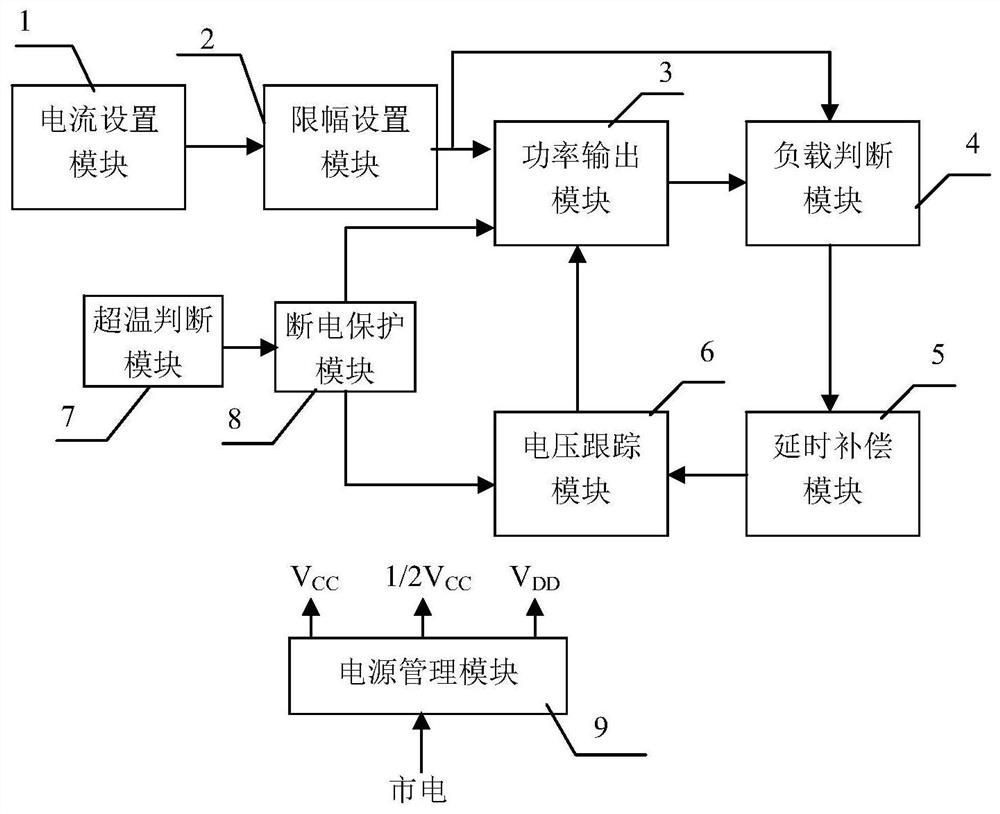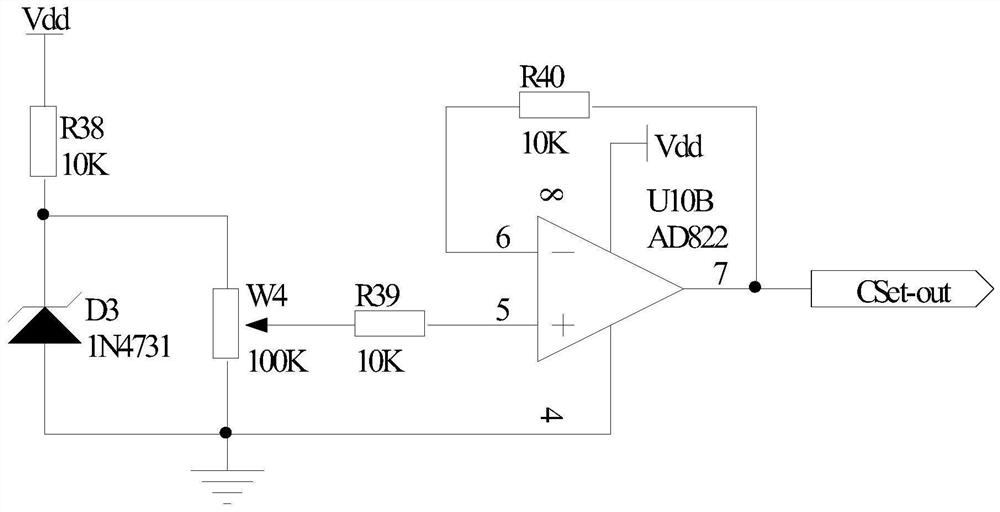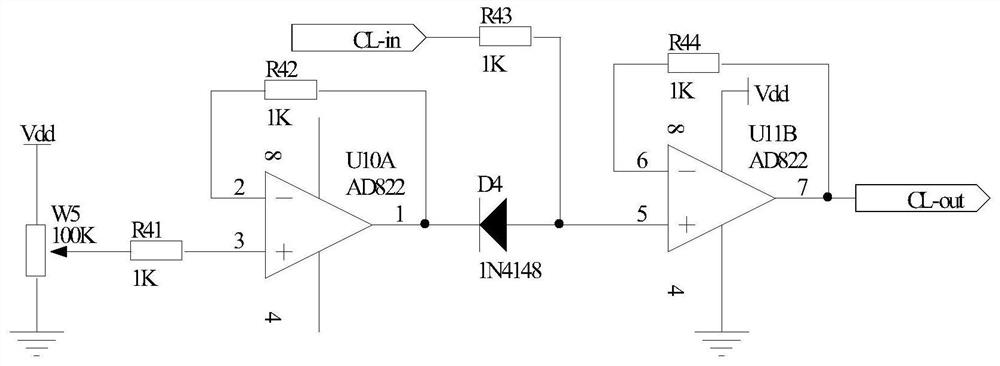A load adaptive variable voltage constant current source circuit
A variable voltage and constant current source technology, applied in the direction of adjusting electrical variables, instruments, control/regulation systems, etc., can solve problems such as poor load adaptability, rising internal power consumption of triodes, and triodes entering the undervoltage zone, etc.
- Summary
- Abstract
- Description
- Claims
- Application Information
AI Technical Summary
Problems solved by technology
Method used
Image
Examples
Embodiment 1
[0032] Embodiment 1 Overall structure of the present invention
[0033] Overall structure of the present invention is as figure 1 As shown, there are current setting module 1, limiting setting module 2, power output module 3, load judging module 4, delay compensation module 5, voltage tracking module 6, over-temperature judging module 7, power-off protection module 8 and power management Module 9; wherein, the current setting module 1 is connected to the limit setting module 2, and the limit setting module 2 is also connected to the power output module 3 and the load judgment module 4 respectively, and the power output module 3 is connected to the load judgment module 4, and the load judgment module 4 is connected to the delay compensation module 5, the delay compensation module 5 is connected to the voltage tracking module 6, the voltage tracking module 6 is connected to the power output module 3, the over-temperature judgment module 7 is connected to the power-off protection...
Embodiment 2
[0034] Embodiment 2 The current setting module of the present invention
[0035] The current setting module 1 of the present invention belongs to conventional technology, and can be conventionally designed according to actual needs, and can also adopt such as figure 2 In the structure shown, one end of the resistor R38 is connected to the power supply Vdd, the other end is connected to the cathode of the Zener diode D3 and a fixed end of the sliding rheostat W4, the anode of the Zener diode D3 is grounded, the other fixed end of the sliding rheostat W4 is grounded, and the resistor One end of R39 is connected to the sliding wire end of the sliding rheostat W4, the other end is connected to the non-inverting input end of the operational amplifier U10B, the inverting input end of the operational amplifier U10B is connected to one end of the resistor R38, and the other end of the resistor R38 is connected to the output end of the operational amplifier U10B. And as the output ter...
Embodiment 3
[0037] Embodiment 3 Limit setting module of the present invention
[0038] The principle circuit of limiter setting module 2 of the present invention is as image 3 As shown, one end of the resistor R43 is used as the input end of the limiter setting module 2, which is recorded as port CL-in, and the other end is connected to the non-inverting input end of the operational amplifier U11B and the positive pole of the diode D4, and the negative pole of the diode D4 is connected to the output of the operational amplifier U10A end and one end of the resistor R42, the other end of the resistor R42 is connected to the inverting input end of the operational amplifier U10A, the non-inverting input end of the operational amplifier U10A is connected to one end of the resistor R41, and the other end of the resistor R41 is connected to the sliding end of the sliding rheostat W5. One end of the rheostat W5 is connected to the power supply Vdd, the other end is grounded, the inverting input ...
PUM
 Login to View More
Login to View More Abstract
Description
Claims
Application Information
 Login to View More
Login to View More - R&D
- Intellectual Property
- Life Sciences
- Materials
- Tech Scout
- Unparalleled Data Quality
- Higher Quality Content
- 60% Fewer Hallucinations
Browse by: Latest US Patents, China's latest patents, Technical Efficacy Thesaurus, Application Domain, Technology Topic, Popular Technical Reports.
© 2025 PatSnap. All rights reserved.Legal|Privacy policy|Modern Slavery Act Transparency Statement|Sitemap|About US| Contact US: help@patsnap.com



